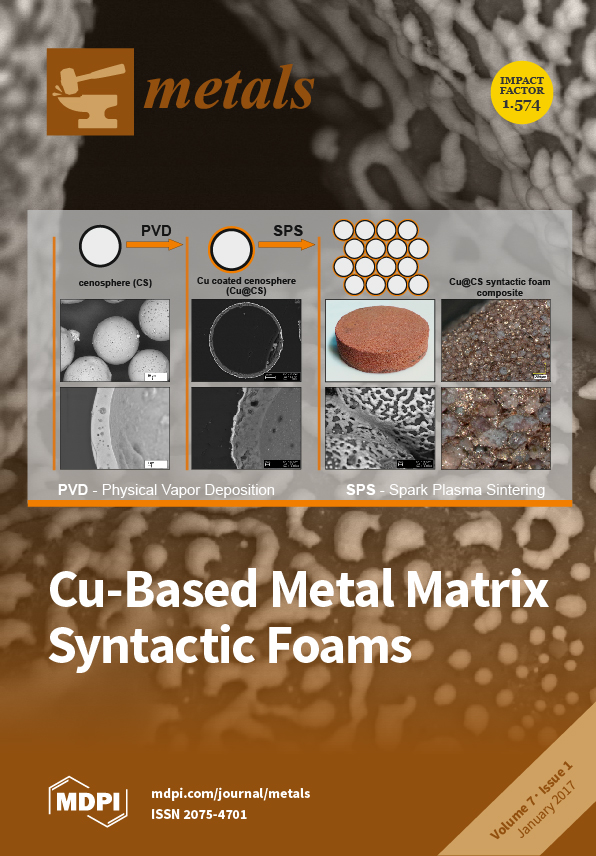Red scale defect is known to be mainly caused by net-like Fe
2SiO
4–FeO. In the present study, the morphology of Fe
2SiO
4–FeO in a Si-containing steel was investigated by simultaneous thermal analysis, high-temperature laser scanning confocal microscopy,
[...] Read more.
Red scale defect is known to be mainly caused by net-like Fe
2SiO
4–FeO. In the present study, the morphology of Fe
2SiO
4–FeO in a Si-containing steel was investigated by simultaneous thermal analysis, high-temperature laser scanning confocal microscopy, scanning electron microscopy, and energy dispersive spectroscopy. Only liquid Fe
2SiO
4–FeO can form a net-like morphology. Liquid Fe
2SiO
4–FeO is classified into two types in this work. Type-1 liquid Fe
2SiO
4–FeO is formed by melting pre-existing solid Fe
2SiO
4–FeO that already exists before the melting point of Fe
2SiO
4–FeO. Type-2 liquid Fe
2SiO
4–FeO is formed at a temperature higher than the melting point of Fe
2SiO
4–FeO. The results show that type-1 liquid Fe
2SiO
4–FeO is more likely to form a net-like morphology than is type-2 liquid Fe
2SiO
4–FeO. The penetration depth of type-1 liquid Fe
2SiO
4–FeO is also larger at the same oxidation degree. Therefore, type-1 liquid Fe
2SiO
4–FeO should be avoided in order to eliminate red scale defect. Net-like Fe
2SiO
4–FeO may be alleviated by two methods: decreasing the oxygen concentration in the heating furnace before the melting point of Fe
2SiO
4–FeO is reached and increasing the reheating rate before the melting point. In addition, FeO is distributed with a punctiform or lamellar morphology on Fe
2SiO
4.
Full article





